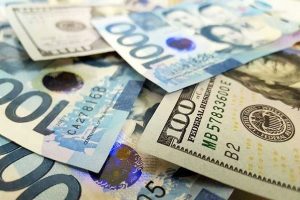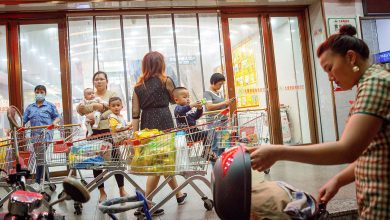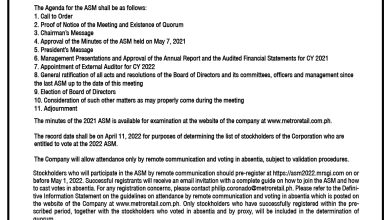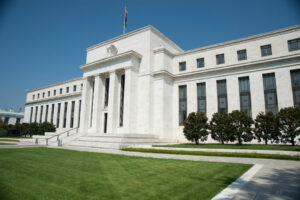The Best Medoc Bordeaux Buys
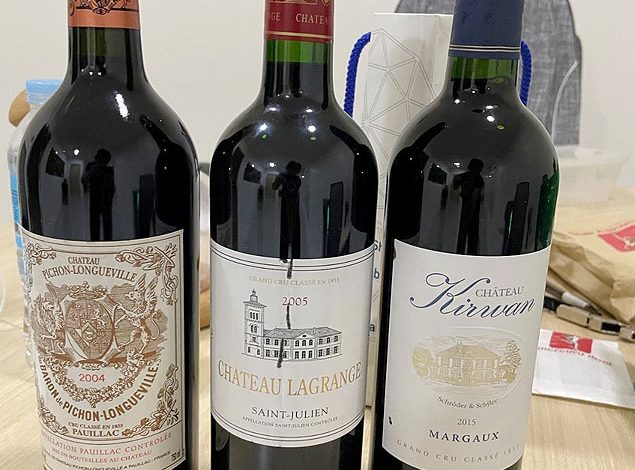
CHATEAU Lagrange and Chateau Kirwan (the 2nd and 3rd bottles from the left) are great Grand Cru bargains.
WHEN it comes to wines, no other wine region has more pedigree and reach than Bordeaux. But like everything else, not all Bordeaux are created equal. In fact, to me there are as many ordinary to bad Bordeaux as there are good ones.
That is why we must take our hats off to the French for creating the Grand Cru classification system of Bordeaux in 1855 that allowed us consumers to get a list of chateau names and labels to choose from. This was initiated by Napoleon III, the first president of France from 1848 to 1852 who then became the French emperor from 1852 to 1870. All the 61 properties known for their red wines in the 1855 Grand Cru Classification, apart from Chateau Haut-Brion, were from the Medoc part of Bordeaux.
A similar classification with 27 properties was also created for the sweet white wine regions of Sauternes and Barsac, with Chateau d’Yquem as its only first growth.
Subsequently, other Bordeaux sub-regions also had their own hierarchical classifications, like the 1953/1959 Graves Classification (later known as Pessac-Leognan classification) and the more controversial and supposedly every decade-changing St. Emilion Classification that started in 1955, but had changes in 1969, 1986, 1996, 2006, 2012 and is due for an update soon.
REVISITING BORDEAUXBordeaux is the largest French wine region, with some 120,000 hectares of vineyards and around 7,000 wineries at present, but this number of wineries has steadily been going down over the years because of consolidation. Bordeaux alone has 60 appellations (AOCs), from the most generic Bordeaux AOC to the larger Medoc and St. Emilion AOCs, and to the smaller commune ones like Pomerol AOC.
Bordeaux is a red wine dominant region, with wine production at around 90% red against only 10% white. The region also makes some sparkling wines under the Cremant de Bordeaux, an AOC created in 1990.
Bordeaux, while still the largest wine producer in France, has however seen production numbers go down mainly due to nature and weather issues like frost, drought, hail, and even mildew. The recently concluded 2021 vintage saw Bordeaux production at just over 4 million hectoliters (hl), which is some 25%+ below average yields a decade ago of 5.5 million hl. But there have been some more glaring declines, like in 2013 from severe heat, and in 2017 from extreme frost — with both vintages falling below 4 million hl. Industry stalwart Yann Schyler (of negociant Schroder & Schyler, established in 1739) recently informed me that many chateaux are losing the equivalent of one harvest in every four years due to these lower yields.
In terms of consumption, more than half or around 55% of all Bordeaux production is still consumed domestically. Those being exported are mostly the commercial brands, either the Grand Cru brands, or familiar retail shelf Bordeaux names like Mouton Cadet, Alexis Lichine, Calvet, Maison Castel and the like that are from huge wine conglomerates. Most generic Bordeaux AOC wines in local supermarkets are priced above P500/bottle but below P1,000, except for the premium-priced Mouton Cadet, which is piggybacking on the Mouton-Rothschild Grand Cru status.
FOCUSING ON MEDOCMedoc is the Bordeaux region most associated with the left bank, as it is located to the left of the Gironde Estuary. But Medoc is both a Bordeaux sub-region and an appellation.
Within the Medoc sub-region are eight appellations or AOCs, namely: Medoc, Haut-Medoc, St. Estephe, Pauillac, St. Julien, Moulis, Listrac-Medoc, and Margaux. These were the AOCs of the 60 Grand Cru Classé wines that were assigned to five growth levels, with first growth as highest and fifth growth as lowest, as listed in the sacred 1855 Bordeaux Classification, excluding Chateau Haut-Brion, which is from Passac-Leognan.
Chateau Haut-Brion is like the lone guest entry, but it is still one of only five prestigious first growths in the company of Chateau Lafite, Chateau Latour, Chateau Margaux, and Chateau Mouton-Rothschild (a late promotion from second growth in 1973).
The Medoc sub-region is roughly 15,000 hectares, while the Medoc AOC is around 4,700 hectares, or 31.5% of the total Medoc sub-region size. Pauillac and Margaux are the two most popular AOCs in Medoc. Cabernet Sauvignon is the most dominant grape varietal planted in this region, followed by Merlot, Cabernet Franc, Petite Verdot and very little Malbec.
The Grand Cru wines represent approximately 23% of the entire wine production in the Medoc sub-region. Most of these Grand Cru wines are sold on a trading setup referred to as La Place de Bordeaux where wine merchants, known as negociants, buy from wine producers via a broker, called a courtier. Then these negociants sell the Grand Cru wines all over the world.
THE SURE BETS IN BORDEAUXWhile several things have changed — including ownership, weather, wine technology and several other factors over the last 165+ years — the 1855 Medoc classification still stands out today as perhaps the most respected and credible wine quality classification ever created.
And with Medoc being the home of some of best wines ever made on the planet (the Lafites, Latours, etc.), this is the Bordeaux region I gravitate to for a sure bet wine to indulge in. I am not saying at all that none-Grand Cru Medoc wines nor the Cru Bourgeois wines in Medoc are dull and ordinary, even if my personal experience kind of suggests that — it is just impossible and unethical to generalize. I am just taking the risk factor out.
Grand Cru wines sound so intimidating and expensive, but reality is not all Grand Cru wines are out of reach, and in fact, several of these Grand Cru labels are much lower in price than the cult wines from Napa Valley, Italian super Tuscans, and even top wines from Australia and Chile — yet none of these other wines have the heritage, legacy and prestige of the Medoc Grand Cru wines.
We actually can have a bit of Grand Cru wine without breaking the bank, and below is the list of wines I highly recommend because of my actual experience drinking them. I listed the vintages of these wines I have tasted. These are great bargains now but for how long, it is hard to say. For one, a label can experience newfound glory and a price increase may follow soon, just on principle of supply and demand.
BARGAIN GRAND CRU WINES TO SPLURGE ONThere are several bargains if I was to base on international market prices, but I will only recommend those I have personally tasted as mentioned. So, excluded from my recommendations because I have yet to try a single bottle of them are Chateau Dauzac and Chateau Ferriere, both 3rd growths from Margaux; Chateau La Lagune, a 3rd growth from Haut-Medoc; and Chateau Lafon-Rochet and Chateau Cos Labory, a 4th and 5th growth from St. Estephe respectively.
These wines cost, I estimate, between P3,000/bottle to just a little above P5,000 for recent releases (10 years old or less). I included vintages I tasted from each Chateau since the 2000 vintage.
Below are my 10 Grand Cru Chateaux label recommendations.
FROM THE HAUT-MEDOC AOC1. Chateau de Camensac (5th growth) — The vineyards are located near boundary of the Saint-Julien-Beychevelle appellation, so it only got a Haut-Médoc appellation. Since 2005 it has belonged to the Merlaut family, affiliated with the Taillan Group. A favorite go-to wine of mine because it is reasonably priced even in on-premise outlets, especially when I travel to Hong Kong, Singapore, or Malaysia. I’ve had the 2002, 2004, 2005, 2008, 2010, 2016, 2017. The 2005 was the one vintage I remembered because of its black currant and juicy features.
2. Chateau Cantemerle (5th growth) — Since the 1980s it has been under French insurance group Les Mutuelles d’Assurance du Bâtiment et des Travaux Public. I’ve tried the 2004, 2009 and 2015 vintages. From the Margaux AOC.
3. Chateau Kirwan (3rd growth) — Owned since 1925 by the négociant company, Schröder and Schÿler. I’ve had the 2000, 2005, 2008, 2009, 2010, 2011, 2015, 2016, 2017, and 2018 vintages. The consistency of quality of the different vintages is incredible despite the diverse weather conditions, but standouts are the 2000, 2009, and 2016.
4. Chateau Du Tertre (5th growth) — While homophonous with the name of our outgoing president, Chateau du Tertre is from the Margaux region, not Davao. Since 1995, the property has been under Eric and Louise Albada Jelgersma, owners of the neighboring estate, Château Giscours. I’ve had the 2006 and 2009 courtesy of a Wine Story event I attended. From the Pauillac AOC.
5. Chateau Lynch-Moussas (5th growth) — Since 1919 it has been owned by the Castéja family, who also owns Chateau Batailley and the negociant company Borie-Manoux. I just recently discovered this label and have had the 2016 and 2017 vintages.
6. Chateau Puy-Ducasse (5th growth) — It has been owned since 2004 by the Crédit Agricole Group, a French international banking group and the world’s largest cooperative financial institution. I have tried the 2016 and 2017 vintages.
7. Chateau Haut-Bages-Liberal (5th growth) — It has been owned since 1983 by the Taillan Group (Merlaut family as with Camensac) and managed by Claire Villars-Lurton. I have tasted the 2016 and 2017, and the 2016 vintage is drinking extremely well now. From St. Julien AOC.
8. Chateau Langoa-Barton (3rd growth) — This is the first of the two Bordeaux wine estates bought by Irishman Hugh Barton in the 1820s, the other being Léoville-Barton, a 2nd Classified Growth. Both chateaux have remained with the Barton family, now under the leadership of Anthony Barton. I have tried the 2008, 2012, and 2014. The 2014 was super nice, powerful, and will be a beauty for years to come.
9. Chateau Lagrange (3rd growth) — It has been under Japanese liquor giant Suntory since 1983. I have tasted the 2000, 2011, 2013, and 2015. The 2000 was superb.
10. Chateau Branaire-Ducru (4th growth) — The Maroteaux family bought the property in 1988 and has invested considerably in the vineyard and winery since. Once more I had these wines courtesy of Wine Story — the 2004, 2007, and 2000. The 2004 was very memorable, with both lovely floral and fruit power.
In case these Grand Cru wines are still a bit too expensive, each of these estates has a second label or second wine — Chateau Kirwan, for instance, has one called Charnes de Kirwan, while Chateau du Tertre has a second label known as Les Hauts du Tertre, and so on. These second labels are typically priced 30-40% below their Grand Cru wine counterparts, but still are part of the terroir of the first wine. I personally believe even these second wines are safer bets than non-Grand Cru Medoc wines.
Bargain hunters should be looking for good recent vintages, and Bordeaux has been blessed since the start of the new millennium. Look for under-the-radar vintages like 2014, 2017, and even 2019.
Do you have your own favorite Grand Cru Medoc wines you feel are reasonably priced? Let me know …..
The author is the only Filipino member of the UK-based Circle of Wine Writers. For comments, inquiries, wine event coverage, wine consultancy, and other wine related concerns, e-mail the author at wineprotege@gmail.com, or check his wine training website at https://thewinetrainingcamp.wordpress.com/services/
